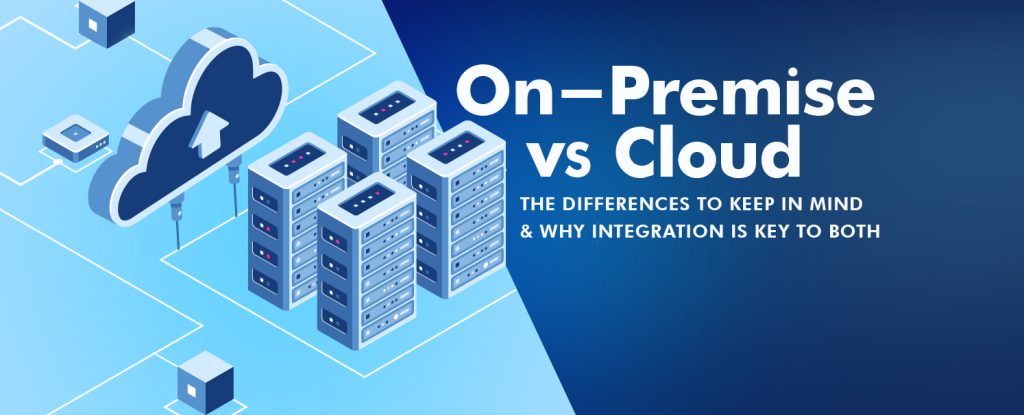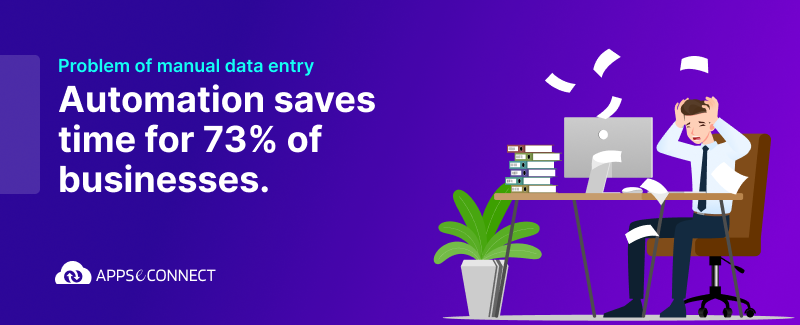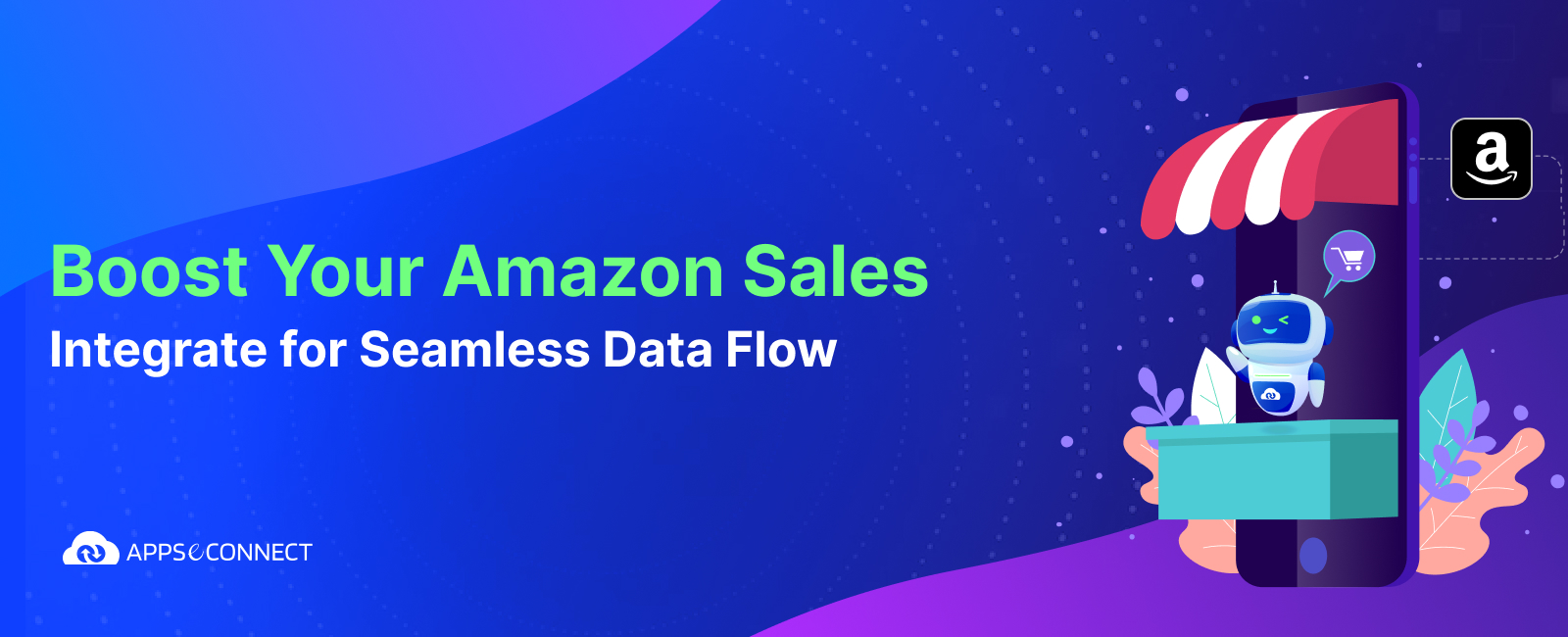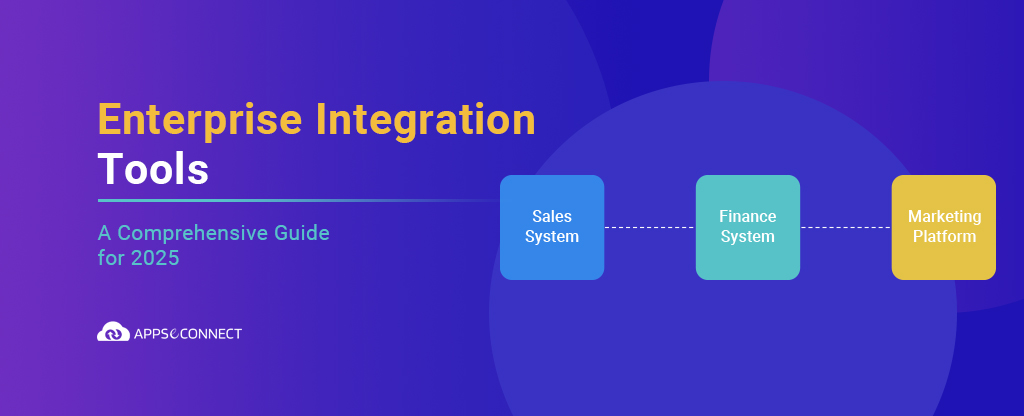The pandemic has changed the digital ecosystem for the entire industry forever. Most businesses had to make drastic changes to their existing digital infrastructure to sustain their business in this new post COVID industry. With the restrictions put down by the lockdowns, organizations had to shift to an online cloud infrastructure to keep operating remotely. But a complete shift to an online cloud structure for every organization is not possible. Businesses operating in conventional sectors such as banking and government administration or with sectors with rigorous security compliances prefer having their digital infrastructure be physical and present on-premises. Thus, while there is a steady push in the entire industry towards cloud-based systems, many organizations choose to operate under a hybrid infrastructure that combines both on-premises and cloud infrastructure. Integration of such on-premise and cloud applications into a hybrid infrastructure through an iPaaS is inevitable in the market and hence, their adaptability to various integration scenarios is a crucial parameter.
With the security of the on-premises platforms, the flexibility of cloud systems and hybrid systems combining the features of both, business owners need to identify the benefits each system provides and decide on which to focus more on for optimal returns for their business. Moreover, just implementing either of the three types of digital infrastructure is not enough, and implementing end-to-end integration is necessary to make the most out of it.
If you have multiple systems running in your business, connect all of them under one single platform to automate the business process and improve your productivity and efficiency!
Cloud Integration solutions and what differentiates them from On-premises Integration Infrastructure.
Cloud solutions have grown in popularity over the last few years due to their capability to provide enterprises with workflow agility and flexible scalability. On the other hand, legacy on-premises solutions also have advantages that cloud solutions don’t, such as improved reliability, security, and in-depth system control. Thus, IT decision-makers need to evaluate the differences between the two platforms to identify and implement the optimal digital infrastructure for their organization. Thus, it’s imperative to properly evaluate a cloud integration platform or an on-premises platform before implementation. Let’s take a closer look into the core differences that distinguishes the two systems from each other.
Deployment structure
On-Premises: In an on-premises environment. the company is responsible for the functioning of the physical servers and the solutions deployed in them. With in-house deployment on local servers, the organization needs to divert team members to maintain the infrastructure and related processes.
Cloud: In a hosted cloud, the servers and the solutions are maintained off-site by the service provider. An enterprise implements the system through a subscription and can access its resources and use them accordingly at any given time.
Cost of Implementation
On-Premises: On-premises systems need to be built from the ground up, which requires a lot of effort and comes at a hefty cost. Not only is there a significant amount of initial investment needed to get the infrastructure and processes running, but there are also additional recurring costs of power consumption, maintenance, and operating costs.
Cloud: Organizations that implement cloud solutions only pay for the resources used, making it more cost-effective, especially for smaller organizations. Setting up the infrastructure is also faster, and the enterprise needs to pay a subscription fee, and the price adjusts up or down depending on the number of resources used.
Level of Control
On-Premises: Since the on-premises infrastructure is developed and maintained in-house, enterprises retain all their data and absolute control over the entire system. With the complete control and the near-impenetrable privacy provided by an in-house network infrastructure, organizations in highly regulated industries with extra privacy concerns prefer on-premises solutions.
Cloud: For a cloud infrastructure, the data ownership is ambiguous. While the company owns the data stored on the cloud servers, with the data and encryption keys residing with the third-party provider, if there is any server downtime, the organization is unable to access the data.
System Security
On-Premises: For any organization, cybersecurity is essential, especially for the eCommerce, government, and banking industries. These organizations require a more robust security and privacy protocol that only an on-premises environment can provide.
Cloud: With cloud systems, security remains the main barrier to adoption. With the vast amount of data stored in cloud networks, cloud systems are always at the risk of cyberattacks. With many publicized cloud breaches and statistics indicating an increase in cyber-attacks in the upcoming years, the security of cloud systems remains a concern for IT decision-makers.
Regulatory Compliances
On-Premises: Many companies need to operate under regulatory rules set by local and international laws, regardless of their industry segment. To remain compliant with these governmental and industrial regulations, companies must have their data in place. An on-premises infrastructure ensures easier maintenance of this data.
Cloud: When choosing a cloud solution, the enterprise needs to ensure that the selected vendor is compliant with regulatory codes and up to industry standards. With sensitive data stored on the cloud servers like customer, employee, and partner data, the vendor must adhere to proper privacy regulatory guidelines.
Infrastructure Accessibility
On-Premises: While on-premises systems can be accessed remotely, but often requires third-party gateways to make that possible. The requirement for additional third-party solutions introduces added points of security risk and communication failures.
Cloud: For a cloud system, all it takes is an internet connection to access data and resources from the system. The vendor provides the necessary security protocols and communication gateways, making the system more flexible and mobile for the end-user. The flexibility enables employees to work from anywhere at any time.
Cloud and On-Premises Integration: The Advantages and Disadvantages
| Aspect | On-Premise Integration | Cloud Integration |
| Deployment | Installed and runs on local servers within the organization’s premises. | Hosted on the cloud; accessible via the internet. |
| Control | Full control over hardware and software configurations. | Limited control; managed by the service provider. |
| Scalability | Requires significant investment and time to scale; limited by physical hardware capacity. | Easily scalable; resources can be adjusted on-demand. |
| Cost Structure | High upfront capital expenditure for hardware and licenses; ongoing maintenance costs. | Subscription-based pricing; operational expenditure with minimal initial investment. |
| Maintenance | Organization is responsible for maintenance, updates, and troubleshooting. | Service provider handles maintenance, updates, and support. |
| Security | Data resides on-premise; security managed internally, which can be beneficial for sensitive data. | Data stored off-premise; relies on provider’s security measures, which may raise concerns for sensitive information. |
| Accessibility | Limited remote access; requires VPNs or other remote access solutions. | Accessible from anywhere with an internet connection. |
| Integration Complexity | Complex integration with cloud applications; may require additional middleware or custom solutions. | Designed for seamless integration with other cloud services and applications. |
| Compliance | Easier to comply with industry-specific regulations by maintaining data on-premise. | Compliance depends on the provider’s adherence to regulations; may vary between providers. |
| Disaster Recovery | Requires in-house disaster recovery solutions; can be costly and complex. | Often includes built-in disaster recovery options; data redundancy across multiple locations. |
With the difference in architecture and deployment process, each solution provides distinct advantages and disadvantages to the user. Proper evaluation of the pros and cons of each system is thus necessary to identify the ideal solution for an enterprise.
Cloud Integration Infrastructure
Pros:
Accessibility: As an online system, accessibility is the most prominent advantage that a cloud solution provides by allowing the user to access the system at any time from anywhere through a web browser.
Cost Efficiency: There are no upfront costs associated with cloud hosting, and users only need to pay the regular subscription fees, which fall under operating expenses. The subscription fees include maintenance and support services and are predictable, unlike fluctuating costs for in-house maintenance.
Maintenance: With a cloud solution, third-party vendors take care of the entire process of maintaining and updating the system. With the cloud service provider responsible for maintenance and upgrades, enterprises can allocate their resources to higher priority processes.
Scalability: Without a physical system, cloud technologies provide users greater flexibility to scale with growing demands.
Cons:
Internet Dependency: While the online system allows users to access the system from anywhere, a reliable and stable internet connection is required to remain productive, which may not always be available.
Limited Customizability: With a cloud system, the vendor is responsible for the features the solution comes with each update. The lack of control over the system limits the options for complex customization that the end-user may require.
Vulnerability to Cyber Attacks: While every cloud system deploys a vast suite of security protocols, storing data and important files on external service providers always opens up risks for a data breach or cyber-attack.
On-Premises Integration Infrastructure
Pros:
Better Control: For on-premises systems, users get absolute control over data, hardware, and software platforms. With the in-house dedicated servers, the company doesn’t need to ask the cloud storage company to upgrade their storage plan or add new features and can do the upgrades themselves.
Higher Security: Unlike a cloud solution, which is more vulnerable to data breaches and cyber-attacks, on-premises storage is completely off-limits from any external attacks. On-premises servers are not accessible to those outside the network and are best suited for organizations working with sensitive data.
Offline Operations: The primary advantage of on-premises storage is that the users don’t need to have an internet connection to access the data. Though most businesses depend on the internet to conduct business processes, there is always a possibility of server downtime and loss of the internet, which can harm productivity and lockout access to crucial data.
Cons:
Dedicated IT Support: With on-premises storage, enterprises also need a dedicated IT team to maintain and manage the in-house servers. The company may need to hire new staff members or reallocate existing resources to maintain and regularly update the servers, which can add to the operational costs and reduce the efficiency of the IT team.
Limits Scaling: If a company scales up rapidly and needs more storage space or other capabilities, it is more challenging to scale on-premises servers quickly to meet the growing demands. Unlike cloud solutions, where companies can upgrade to a more expansive plan that offers more capabilities to the user with a click, on-premises storage requires the installation of new hardware and dedicated resources to build the new systems.
Greater Capital Investment: Setting up an on-premises system from the ground up is a costly and time-consuming process, along with support and operational costs. Such a capital investment can be a massive disadvantage for small or new companies.
While the pros and cons of implementing either system are a point of argument, enterprises can circumvent the cons and gain the advantages of both solutions by adopting a Hybrid Infrastructure. A hybrid system is a solution that implements the elements of both IT deployment models by combing the capabilities of on-premises with cloud systems.
How Integration plays a crucial role
No matter what infrastructure an organization may go forward with, be it on-premises, cloud or hybrid, data integration is necessary for digital transformation and keeping data synchronized across the entire system. Without end-to-end integration, any software solution implemented, either on-premise, in the cloud, or hybrid infrastructure, will operate in isolation from one another, disrupting team coordination and reducing organizational efficiency.
Integrations provide organizations with an automated exchange of consistent data between different deployment infrastructures. Without integration, a system in one department of an organization receiving a data update will not have that data reflected in systems of other departments that may need it. End-to-end integration of the entire digital infrastructure of an organization ensures every department receives consistent information, improving the efficiency and overall quality of the associated business processes.
Another advantage of an end-to-end integration of the IT Infrastructure is that business decision-makers get a centralized dashboard for real-time monitoring of data generated by each business workflow. By introducing an integration platform, a lot of data generated by the system that gets overlooked and unused for business analytics comes to the forefront to provide in-depth organizational insight. By developing business strategies based on proper business insight, decision-makers can secure long-term sustainable revenue and reduce operational costs.
Thus, we can see that, while there are distinct differences between on-premises and cloud systems, which offer their own set of advantages and disadvantages to the users, having a robust integration platform is necessary to make every system work to the benefit of the organization.
On-Premises, Cloud Systems, or Hybrid Infrastructure, APPSeCONNECT’s Integration has you covered!
Be it on-premises, cloud solutions or a hybrid of both, APPSeCONNECT as a robust BPA and iPaaS platform provides your business with the seamless end-to-end integration it needs to achieve perpetual growth and limitless scalability. APPSeCONNECT offers both hybrid and cloud integration capabilities to the user allowing them to configure the integration settings inside the cloud portal and download and install the APPSeCONNECT on-premise agent in their physical system, making the data transfer between applications take place entirely within the organization’s network, and on the other hand, the cloud integration capacities allow users to integrate cloud applications via the web as a service without the need for downloading and installing any software. With the capability to connect every type of IT infrastructure, APPSeCONNECT ensures every business can seamlessly integrate their IT infrastructure and achieve long-term growth and success.
Start integrating your business today through APPSeCONNECT today!
If you have multiple systems running in your business, connect all of them under one single platform to automate the business process and improve your productivity and efficiency!





















